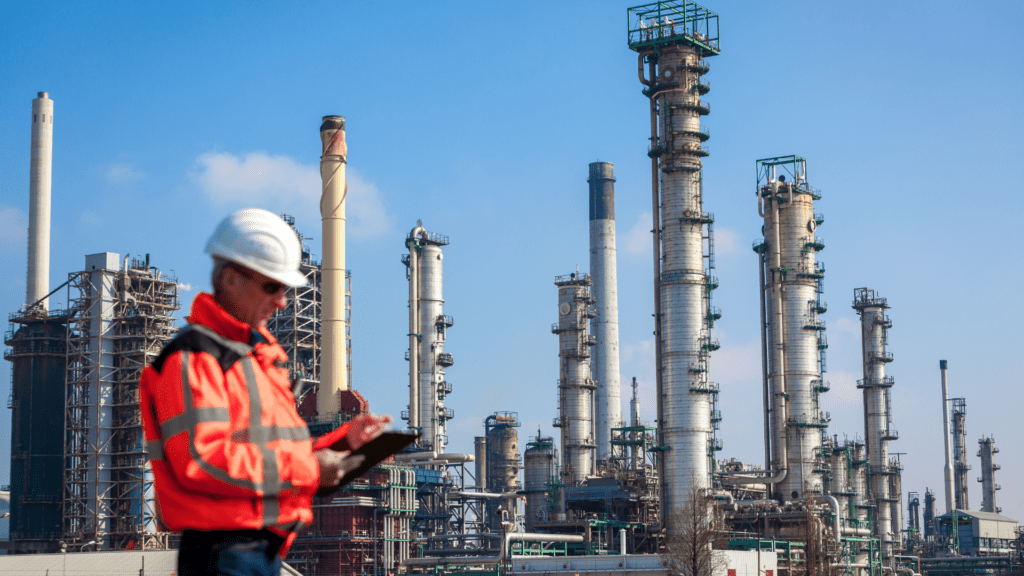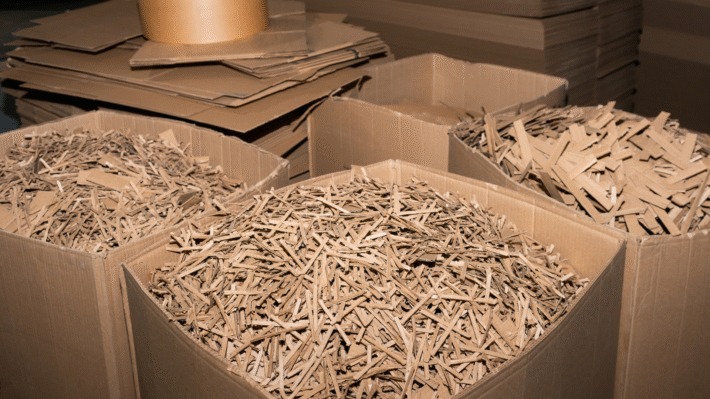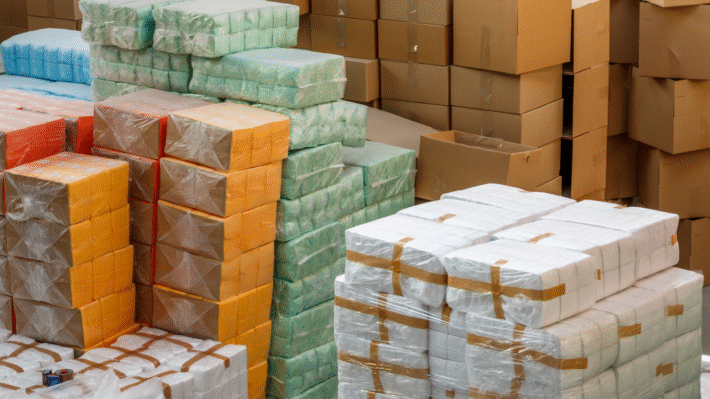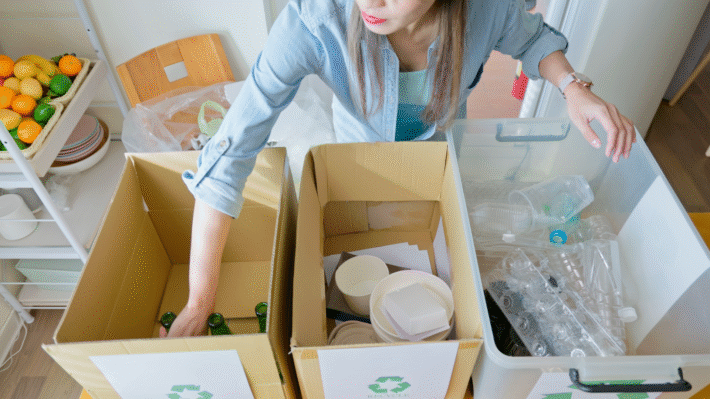Promoting Circularity in Petrochemical Waste Using Closed-Loop Systems

Creating circularity in the petrochemical waste supply chain is like discovering a treasure hidden in plain sight. Imagine a world where waste challenges in the petrochemical industry aren’t just a problem but an opportunity to reduce, reuse, and recycle. By developing closed-loop systems, we can turn petrochemical waste into valuable resources, especially when it comes to solvents and catalysts.
Solvents and catalysts are the secret heroes behind many chemical reactions, silently boosting efficiency in their unique ways. But disposing of them, through incineration or landfill, can be quite problematic. That’s why closed-loop systems come into play, capturing the essence of circularity by reclaiming and reusing what would otherwise think as waste.
Let’s embark on a journey to explore how engaging technologies and impactful strategies can transform this vision into reality, creating economic, environmental, and competitive benefits for all. Leveraging these strategies can indeed close the loop and make our world a greener place. 🌿
Understanding Petrochemical Industry Waste Challenges
In the world of petrochemicals, waste is a big problem. Imagine if every soda bottle and plastic bag was left in your backyard forever. That’s a bit like the waste issues we have here. But don’t worry, there’s a way to fix it!
The Problem with Petrochemical Waste
Petrochemical waste comes from making things like plastics and fuels. Sometimes, this waste just piles up. So what kinds of waste are we talking about?
Different Types of Waste
- Plastic Scraps: These are bits and pieces of plastic that are left over.
- Chemical Sludge: This is a thick ooze that is hard to deal with.
- Polluted Water: Water that’s been used in factories that needs to be cleaned up.
Where Does the Waste Go?
Right now, much of this waste ends up:
- In Landfills: Buried under the ground.
- Burned: Sometimes turned into ash, which isn’t always a good thing.
Way too much ends up in landfills or gets burned, causing more pollution. We need to find a better way!
Circularity in Waste Management
Here’s the fun part—what if we could use waste again like a magic trick? That’s where circularity comes in. It’s about making waste disappear by using it wisely!
What is Circularity?
Circularity means using waste again and again. It’s like turning old Lego blocks into new toys. Instead of throwing things away, we find new uses for them!
The Loop: Reducing, Reusing, Recycling
- Reducing: Use less from the start.
- Reusing: Fix it up and use it again!
- Recycling: Turn old stuff into new products.
When we do these two steps, it’s like closing a loop. Nothing gets wasted and our world becomes a cleaner place!
Everyone can be part of this by rethinking how we deal with waste.
Remember, we can solve big problems with small steps. Using less and reusing more is super important and helps save our planet.
Role of Solvents and Catalysts
Understanding the role of solvents and catalysts is super important in the world of petrochemicals. These special helpers make reactions smoother and save energy and resources in the process. Let’s take a closer look at how they work and why they’re shining stars in chemical factories.
How Solvents Work in Chemical Reactions
Solvents are like the secret sauce in chemical reactions. They dissolve substances, bringing them together to react. Without solvents, reactions would take much longer, or might not happen at all. So, what makes solvents so efficient?
Using Solvents for Efficiency
Solvents help in breaking up materials and making chemicals mix better. When chemicals are mixed well, they reach the right conditions to react quickly. This saves time and electricity, which is essential in big factories.
Disposing of Solvents Today
Right now, after solvents do their job, they are often burned or buried. This is a problem because it can harm the earth. Burning releases gases, and burying can cause pollution. A better way is needed to handle them.
Understanding Catalysts and Their Functions
Catalysts are like the backstage crew in a play. They don’t show up in the final product, but without them, nothing would happen. They speed up reactions and make processes more efficient without being consumed.
Different Uses of Catalysts
Catalysts are used in a variety of ways in the petrochemical industry. They assist in breaking down crude oil into gasoline and other useful products. They are also used in creating plastics and other materials. By speeding up these reactions, they cut down the energy needed.
Challenges with Catalyst Disposal
Once catalysts have done their job, they also face a disposal problem. Used catalysts can be toxic and contain valuable metals, which are wasted if simply thrown away. Figuring out a way to reuse or properly dispose of these can save money and lessen harm to the planet.
Understanding and improving these roles can make a big difference in creating a cleaner, more efficient industry.
Creating Closed-Loop Systems
Closed-loop systems are all about making sure nothing goes to waste. It’s like a giant recycling project for the petrochemical industry. Now let’s see how we can do this for solvents and catalysts!
Circular Systems for Solvents
Collecting and Reusing Solvents
Collecting and reusing solvents is no small task. Solvents are liquids that help dissolve other substances and are used in many products. Instead of just tossing them away, we can collect them. It’s like picking up all your LEGO pieces after building a castle—so you can use them again! Special machines suck up the used solvents, clean them up, and make them ready for another round of work.
Efficient Separation Techniques
Once those solvents are gathered, it’s time for efficient separation techniques to shine. Imagine you have a mix of sand and sugar, and you want only the sugar. You’d need a way to separate them, right? In the petrochemical world, they use cool tools like distillation columns or membranes to filter the solvents from waste. This makes sure they get the pure solvent back, just like you get pure sugar from the mixture!
Designing Closed Loops for Catalysts
Reclaiming and Rejuvenating Catalysts
Reclaiming and rejuvenating catalysts is a bit like giving a bicycle a tune-up. Catalysts are special helpers in chemical processes, but they can wear out. Instead of throwing them away, we can bring them back to life. It’s about cleaning them up and restoring their power so they can jump right back into action. This renewal keeps the cycle going and saves money and resources.
Recycling Catalytic Materials
Finally, the recycling of catalytic materials is super important. When catalysts are beyond fixing, they can still be broken down and recycled into new materials. It’s kind of like making a new school project from the leftovers of an old one. This not only saves precious resources but also reduces waste. By doing this, we keep the cycle rolling and the planet happy!
Technologies Enabling Circularity
Today, we’re diving into how technology makes circularity possible in the world of petrochemicals. Circularity means using something again and again instead of wasting it. We’ll look at how tech helps us do just that with solvents and catalysts.
Technology for Solvent Recovery
Solvent Recovery is like giving old things another chance. Here’s how tech helps with solvent recovery:
Distillation and Membranes
Distillation is like magic with heat! We use it to separate different liquids. When two liquids don’t mix well, they can be boiled and then cooled down to catch them separately. This is how we get pure solvents back.
Membranes act like a really smart sieve. They let only certain parts of a mixture through, allowing us to keep the good stuff and leave the rest behind. It’s like a tiny filter with superpowers!
Supercritical Fluid Extraction
Supercritical Fluid Extraction is a nifty way to grab valuable stuff from waste. It uses carbon dioxide in a special state to suck out solvents. This method is both clever and kinder to our planet.
Advances in Catalyst Management
Catalysts are like the unsung heroes in chemical reactions. Let’s check out ways to keep them around longer:
Thermal and Chemical Methods
Thermal methods use heat for catalyst renewal. By carefully heating catalysts, we can strip away unwanted materials and get them back to their best state.
Chemical methods involve using special chemicals to break down or fix catalysts. This approach is a smart way to extend the life of valuable catalysts.
Biological and Electrochemical Techniques
Biological processes give us a natural way to treat catalysts. Microbes can eat up bad parts and help regenerate the catalysts. It’s eco-friendly and super smart!
Electrochemical techniques use electricity to clean up catalysts. By sending electrical signals, we can remove pesky particles and restore catalysts to tip-top shape.
Monitoring Circular Systems
Keeping an eye on everything ensures nothing goes to waste. Here’s how we keep track:
Using Sensors and AI
Sensors are the eyes of our circular systems. They help us watch what’s happening. With AI, these systems can even learn and predict what needs to be done. It’s like having a super-smart helper on your side!
Data Analytics for Waste Management
Data analytics serves as a detective. It sifts through numbers and tells us the best ways to manage waste. When we know exactly what’s being used and wasted, we can make better decisions for circularity.
In wrapping up, technology is our ally in creating a world where waste becomes a thing of the past. By understanding and using these advancements, we take giant strides towards a more sustainable future.
Evaluating the Impact
Economic Benefits and Incentives
Analyzing Cost-Benefit Ratios
In the world of petrochemicals, understanding how much we gain versus how much we spend is super important. Here’s the deal: when companies focus on reusing and recycling things like solvents and catalysts, they can save a whole lot of money. Think of it like saving your allowance year after year, and watching it stack up! By looking at cost-benefit ratios, businesses can see how much they save in money and resources by not throwing things away and using them again.
Boosting Industry Efficiency
Making things run smoothly is what we all love, right? Just like a well-oiled machine, when companies find ways to reuse and recycle, things run more smoothly. Less waste means less money spent on buying new stuff and cleaning up old stuff. Everyone in the supply chain—from start to finish—works together, like a big, happy team. This teamwork boosts how well things work, saving time and money for everybody involved.
Environmental Impact Considerations
Reducing Carbon Footprint
The earth is our home, and we sure don’t want to mess it up, do we? By creating closed-loop systems—where almost nothing gets wasted—we help reduce our carbon footprint. This is like taking smaller steps so we don’t leave big, muddy footprints behind. When companies cut down on carbon emissions by reusing stuff, it’s a big win for the planet. It means clearer skies and cleaner air for all of us to enjoy.
Controlling Pollution Effectively
Pollution isn’t any fun, so finding ways to keep it in check is key. By using less and reusing more, industries can greatly reduce pollution. It’s like keeping the water in your fish tank clean by removing waste regularly. Effective pollution control means better water, air, and a healthier place for people and animals alike.
Increasing Industrial Competitiveness
Achieving Sustainability
Everyone wants to be a winner, including companies. Sustainability is the secret sauce to making this happen. By working on keeping things circular, businesses not only do good by the environment but also gain a big competitive edge. This means they can do better than their competition by being both smart with resources and great stewards of the planet.
Forming Strategic Partnerships
Teamwork makes the dream work, right? Forming strong partnerships allows industries to pool their strengths and ideas together. This collaboration helps everyone involved, bringing better results for all. Companies that work together find faster, better, and newer ways to manage and reclaim waste. Such partnerships lead to new opportunities and, often, more success in the field. They’re like superheroes teaming up to save the world, with both the environment and their profits benefiting overall.
Addressing Challenges and Barriers
Overcoming Technical Hurdles
Simplifying Complex Systems
Simplifying complex systems is a big challenge in the petrochemical world. To make things better, we need to make the systems easier to use. This means finding ways to make machines and processes work together better. Simple systems save time and make sure everything runs smoothly. When we make it easier, we can stop waste before it happens.
Managing Energy Use
Managing energy use is also important. Using too much energy can lead to problems like pollution and high costs. To fix this, we need ways to save energy. This can be done by using smarter technology that doesn’t waste power. By using power better, we help the world and can save money too.
Economic and Investment Concerns
Understanding Investment Costs
Understanding investment costs is key to making smart choices. It’s like having a budget when you go shopping. To make a closed-loop work, we need to know how much money it will take. Sometimes it can cost a lot at first, but it can save more in the end. When planning, it’s smart to see how much everything costs to make sure it’s worth it.
Evaluating Financial Risks
Evaluating financial risks means figuring out what could go wrong with our money. Just like checking your steps before jumping, you check if spending will be safe. It helps to look at what might cost us and see if everything will be okay. If we know the risks, we can make better plans to keep things on track.
Navigating Regulatory Requirements
Ensuring Compliance
Ensuring compliance is like following the rules to keep everyone safe. In petrochemical work, there are laws to keep the environment clean and people healthy. Companies must know these rules and do what they say. It’s important to keep checking to make sure everything is done right. This helps businesses and our planet stay healthy.
Aligning with Standards
Aligning with standards means doing things the right way. Standards are like a guide showing how to make sure products are safe. If everyone uses them, everything works together. By following standards, companies can gain trust, and everyone knows the products are made safely.
Industry and Expertise Challenges
Addressing Resistance to Change
Addressing resistance to change can be tough because people like to stick to what they know. In the industry, change can be a little scary, but it helps things grow and improve. Showing why change is good can help people understand and be open to trying new things. It’s like explaining why new games are fun and exciting.
Developing Necessary Skills
Developing necessary skills means learning the right stuff to do all the new things. Just like learning math to solve problems, people need to learn new skills for their jobs. Classes and training can help everyone get better at what they do. When workers know more, they can make better choices, and things run smoother.
A Roadmap for the Future
Imagine you’re on a journey towards a cleaner, greener planet. That’s exactly what we’re aiming for in the petrochemical industry! We’re embarking on a long journey to turn waste into something useful. Let’s explore how we plan to achieve this.
Short-Term Initiatives
Launching Pilot Programs
First, we test the waters with small trials called pilot programs. Pilot programs are like mini experiments where we try out new ideas to see if they work. We set up small systems for capturing and reusing waste. It’s like a practice run before the real thing. These programs help us learn what works and what doesn’t, saving time and money in the long run.
Prioritizing Research and Development
The next step is to play detective! Research and development mean putting on our thinking caps to find new ways to handle waste better. We study everything about petrochemical waste, from what makes it up to how we can reuse it. This step is crucial because it gives us the knowledge we need to make smart decisions.
Medium-Term Goals
Scaling Up Successfully
Now, our experiments have worked, and it’s time to make them bigger! Scaling up successfully means taking our small, successful programs and expanding them into larger operations. It’s like taking a seed that has sprouted and planting a whole field of new crops. We build bigger, more efficient systems to handle more waste.
Integrating New Solutions
This is where the magic happens! We integrate new solutions, meaning we combine new ideas with old systems to make everything work better. It’s like putting together pieces of a puzzle. By integrating solutions, we ensure everything works smoothly. Things like new machines and better ways of separating waste are all part of this exciting step.
Long-Term Plans and Expansion
Achieving Full Circularity
Full circularity is our big dream! It means nothing goes to waste. Everything old gets reused and renewed. Full circularity ensures all waste is collected, recycled, and reused, completing the circle. Imagine a never-ending loop where everything gets a second life, turning trash into treasure.
Exploring New Collaborations
Finally, we reach out and work together with new partners and industries. Exploring new collaborations is like shaking hands with people who share the same goal. We find other companies or experts who can help us. By teaming up, we share ideas, resources, and knowledge. Together, we grow even stronger and make our dream a reality.
We’re on an exciting path to make the planet cleaner, using the smart solutions of circularity. This roadmap for the future is our guide to making every moment count in protecting our beautiful Earth.



